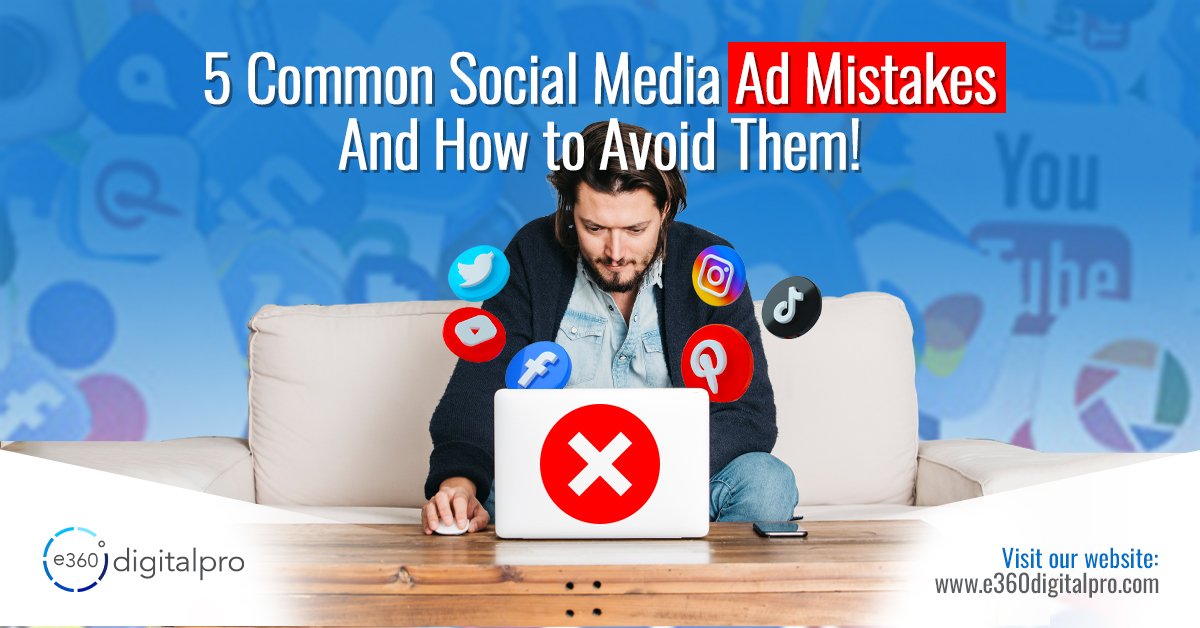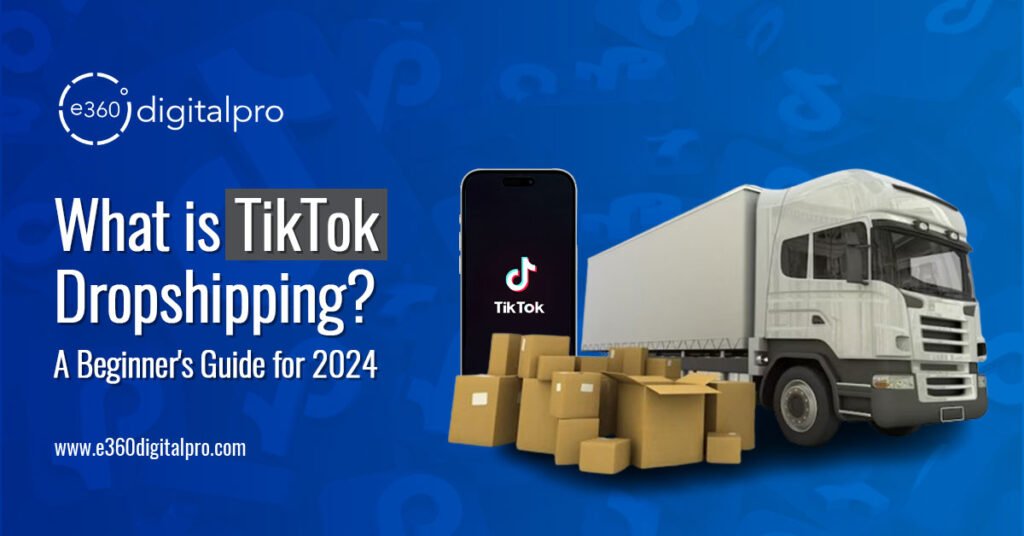Are you tired of watching your social media ad budget disappear faster than a Snapchat story? Are you wondering why your Instagram ads aren’t getting the double-tap they deserve? Fasten your seatbelts, because we are about to solve the riddle of what makes social media advertising so successful. It is not an option to become a victim of social media ads mistakes in a world when one advertisement has the power to make or break a brand. Come along as we break down the top five mistakes that companies make, and more crucially, as we reveal the magic formula for avoiding them. Together, we can turn your social media postings into ROI-producing monsters!
1. The Budget Black Hole: Overspending on Social Media Ads

Setting Unrealistic Goals
Overspending often stems from unrealistic goals. Businesses need to set attainable objectives aligned with their industry, target audience, and competition. A strategic and realistic approach is vital to avoid falling into the budget black hole.
Most Common Social Media Ads Mistakes
Overspending is one of the most frequent mistakes made in the wide world of social media advertising. In addition to this financial blunder, other typical mistakes include failing to set clear budget restrictions, ignoring accurate audience targeting, and undervaluing the impact of visually striking content. The initial step in fixing and improving advertising campaigns is identifying these broad problems.
As WebFX also quoted:
“Many social media marketing plans fail when businesses can’t invest time into their strategy. Consistent posting, responses, and online presence will help boost your interactions and get your name out there. If you want better results, you need to dedicate some time to your pages”.
Lack of Proper Targeting
Effective advertising starts with precise audience targeting. Businesses who fail to target their audience wind up overspending, wasting ad impressions and receiving worse returns. Effectively identifying and honing in on your target market is essential to budget optimization.
By the way, if you’re wondering Why Your AI Content Might Not Rank on Search Engines, head to our blog for the inside scoop on unlocking better rankings.
Social Media Ads Mistakes Examples
Visualize a scenario where a company, eager to maximize exposure, allocates a substantial budget to a broad audience. The oversight of not fine-tuning targeting parameters results in the ad reaching users with minimal interest, squandering resources and yielding negligible returns. This vivid example illustrates the tangible consequences of the overspending trap.
Ignoring Ad Performance Metrics
Metrics are the compass guiding your advertising strategy. Ignoring these metrics is akin to navigating without direction. Regular analysis of click-through rates, conversion rates, and return on ad spend is essential for refining your approach, avoiding overspending, and achieving optimal results.
Facebook Ad Mistakes
Zooming into the platform-specific challenges of Facebook advertising unveils a unique set of pitfalls. Addressing these issues, such as neglecting to set budget limits or mismanaging audience targeting, is paramount to avoiding overspending on this influential social media platform.
Facebook Ad Mistakes Example
Imagine a scenario where a Facebook campaign lacks daily or lifetime budget limits. In this case, overspending becomes a genuine threat as the campaign may quickly exhaust its budget, leaving no room for sustained momentum. This vivid example underscores the importance of meticulous budget management on Facebook.
2. Understanding the Pitfalls of Unchecked Spending
Unchecked spending on social media ads can have dire consequences for your marketing strategy. This strategy frequently results in declining returns on investment, therefore it’s critical to create a budget that supports your objectives. Ad weariness can be ignored, which can drive your viewers away, and failing to test and optimize your advertising only makes the issue worse.

Diminished Return on Investment (ROI)
Decreased returns on investment are the outcome of uncontrolled spending. Spending more money on advertisements without a plan reduces their effectiveness. A budget that is in line with your objectives is essential to preserving a favorable return on investment and optimizing the effectiveness of your advertising campaigns.
Social Media Advertising Mistakes to Avoid
It’s critical to recognize and correct frequent errors, such overspending, in order to avoid the consequences. It is imperative to exercise caution and put in place measures to prevent financial drains in order to preserve funds and optimize the performance of social media marketing initiatives.
As Upwork also quoted:
“There’s a flip side to posting frequently. It’s possible to leverage automation too much, making your scheduled posts feel predictable and robotic. Be sure your social media budget includes room to spend time on each platform daily to interact, share content from other accounts, and use relevant current events to your advantage”.
Social Media Marketing Ads Strategy
Building a solid strategy for your social media marketing ads is similar to building a fortress against excessive expenditure. Careful planning, audience segmentation, and budget allocation become essential components to ensure that every dollar spent wisely and meaningfully contributes to the campaign’s success.
Facebook Ad Mistakes to Avoid
As our inquiry comes to a finish, it is critical that specific steps be taken to prevent Facebook overspending. The prevention of the budget black hole and the sustainability of Facebook advertising initiatives depend on strategies like budget limitations, improved audience targeting, and frequent performance metrics analysis.
According to Buffer:
Small business owners and solo social media managers usually don’t have the time to create or find enough high-quality content to post five times a day on Facebook or tweet 10 times a day on Twitter. By reducing the number of times you post each day, you can focus on the quality of the posts rather than the quantity of posts.
Social Media Ads Strategy
Social media platform advertisements are extremely powerful, but they also need to be carefully managed. Errors in budget distribution and target audience selection can swiftly transform a potentially strategic campaign into a resource-intensive undertaking. The overall effectiveness of the campaign is hampered by excessive spending, which acts as a magnifying lens on inefficiencies.
Failing to Test and Optimize Ads
It is essential to take a systematic approach to testing and optimization. Companies run the risk of wasting money on useless ads and missing out on crucial information if they don’t have it. You must employ A/B testing and regularly modify your ads based on performance data if you want to get the most out of your budget.
Overlooking Ad Fatigue
Even well-funded campaigns might be undermined by ad fatigue. Spending too much money can result in repeating ad placements, which lowers audience engagement and causes viewer fatigue. This may be avoided by actively rotating the ad creative, updating the material frequently, and keeping an eye on the frequency of the ads to keep the audience engaged and avoid ad fatigue.
Delve into the debate on our blog: Long-Form vs. Short-Form Content – Which one wins in 2024. Find out which strategy dominates the digital landscape and shapes content success.
3. The Importance of Visually Appealing Ads
A visually appealing advertisement isn’t simply a luxury in the enormous ocean of social media content; it’s your brand’s life jacket. An engaging graphic can help you stand out from the crowd and capture the attention of your audience in a world when people’s attention spans are shorter than ever. Consider the visual content you create to be your brand’s initial impression.

Someone may quickly swipe past your message if it’s a boring or badly designed advertisement. So what constitutes visually appealing advertising? Now let’s investigate.
According to Square:
“Speaking of not using platforms to their fullest, if you’re not employing social commerce, there’s no way you’re using your social channels to their full potential. Social commerce simply means selling on social media. Grab the attention of prospective customers through your social presence, impress them with your content, wow them with your products and remove a barrier to purchase by allowing them to shop through their favorite social platform”.
-
- Make an investment in striking, high-quality images that complement your brand identity. Ensure that your imagery, whether it be vivid product photos, captivating graphics, or creative illustrations, complements your messaging.
- Don’t be afraid to use your imagination. Innovative and unique visuals stand a better chance of capturing attention and leaving an impression. Add personality to your ads so that consumers will remember your company.
- Because more and more people are using mobile devices, make sure your graphics are optimized for tiny screens. To guarantee that your audience has a seamless and visually appealing experience, test your ads across a variety of devices.
Let’s now explore the common problems to avoid and make sure your graphics have a lasting impression:
-
- Prioritize quality over quantity of photos when writing for your readers. Sometimes a single strong picture can outperform a carousel of mediocre ones.
- Modify your images to fit the audience you wish to reach. Take note of their preferences and provide items that they will enjoy. This ensures that, in addition to capturing their attention, your marketing directly speaks to their interests.
- Do A/B testing to find the images that your audience responds to the most. Examine the information, take notes, and adjust your visual approach as necessary. The iterative approach is essential to ongoing development.
4. The Art of Targeting: Precision vs. Broad Reach
Finding the ideal balance between precise targeting and wide reach in the dynamic world of social media advertising is like learning a delicate dance. Reaching a large audience is appealing, but you can also focus on the people who are most likely to interact with your business thanks to precise targeting. Let’s look at how to hit the right note and simplify this difficult technique.

Wide-Ranging: Casting a Broad Web
Wide audience appeals, particularly for initiatives aimed at raising brand awareness. While it can sound good to have your message resonate with a wide range of demographics, there is a chance that this will lessen the impact of your advertisement. Typical errors made while using a wide reach include:
-
- If you aim for everyone, it’s possible that those who aren’t highly interested in your offering will see your advertisement. Your budget can be rapidly depleted by this without seeing any real benefits.
- With a broad approach, personalization takes a backseat. Tailoring your message to specific segments becomes challenging, potentially hindering the connection with your audience.
Precision Targeting: The Bullseye Approach
Contrarily, precision targeting entails locating and concentrating on a particular audience according to their demographics, interests, and actions. This strategy has clear benefits, although requiring more strategic planning. These benefits are as follows:
-
- Your advertisement has a better chance of connecting with viewers if you target a responsive audience. Higher engagement rates and a more advantageous return on investment are frequent results of this focused strategy.
- Personalized message creation becomes possible when you have a deep understanding of your target. Taking care of particular issues or passions strengthens the bond with prospective clients.
Avoiding the Common Mistakes
Learn about the characteristics, inclinations, and habits of your target market through in-depth market research. This is the cornerstone of efficient targeting.
Segmentation is Key
Segmentation is the process of breaking down your total audience into discrete groups according to pertinent parameters. These standards could encompass past contacts with your brand as well as demographics, interests, and behaviors. Your advertising strategy can be tailored to each of these smaller, more manageable cohorts that are created when you divide your audience into these parts. With this degree of targeting precision, you can be confident that each group will find your messaging both deeply relevant and compelling.
As Hootsuite also quoted:
“Social media managers are constantly being asked to prove the ROI of platforms like Instagram. If you include links via Instagram Stories, Reels, Shops, or your bio, make sure you can prove they’re working. Each link you post should have tracking parameters attached. That way, you can credit business results back to your Instagram marketing efforts”.
Achieving Harmony Between Precision Targeting and Broad Reach
A sophisticated awareness of your brand, audience, and campaign objectives is necessary to strike the right balance between precision and wide reach. By speaking directly to the hearts and minds of particular audience segments, precision targeting enables you to establish a more meaningful and individualised connection. Conversely, wide reach increases the visibility of your brand and reaches a larger audience that may not neatly fall into pre-established groups.
Head on to the exploration with us: Decoding Web 3.0 – Is it the End of Traditional Marketing? Unravel the future landscape on our blog.
5. Common Mistakes in Ad Copywriting
When it comes to social media advertising, writing catchy ad wording is the key to turning a casual scroller into a paying consumer. Nonetheless, a lot of companies make frequent errors that undermine the potency of their copywriting. Let’s break down these traps and reveal the techniques for writing ad copy that grabs attention, gets clicks, and makes an impact.

Lack of Unique Selling Proposition (USP)
In the competitive world of advertising language, failing to highlight your Unique Selling Proposition (USP) is akin to competing in a race without donning your shoes. The distinct taste that sets your brand apart from the competition is your unique selling proposition (USP). If your writing does not highlight what makes your product or service special, it could get lost in the din of digital noise.
Bland Language
Words can make a difference by starting a fire or by being ignored. Copy written in a dull, uninspired style is like putting a black-and-white photo in a museum filled with vibrant artwork. Your content should be a lively depiction of your brand’s personality, capturing viewers’ interest and evoking strong feelings. Rather to opting for a bland vocabulary, make your brand’s originality and ideals come through in your language.
Forgetting the Audience
In the symphony of effective copywriting, the audience serves as the conductor’s baton. Your copy will sound like a discordant note in an otherwise harmonious melody if you disregard their needs, wants, and pain points. Effective copy speaks directly to the target audience, addressing their specific problems and appealing to their emotions. Copy may be disregarded if you don’t pay attention to your audience.
Information Overload
Overwhelming your audience with information is like giving them an encyclopedia when they asked for a brief read in this age of rapid gratification. A cognitive barrier is created by dense writing that contains too much information, making it difficult for the reader to take in the important details. Simplify your message, concentrate on the important details, and point your audience in the direction of a clear, practical approach.
As of Forbes:
“Utilizing social media listening tools is like turning up the volume on the conversations which represent opportunities for your business. Not only that, but they offer a unique means of researching a market, highlighting consumer demographics, gauging possible interest in new products and lines, reinforcing brand values, tracking the health of your company (and your rivals) and enhancing customer satisfaction”.
Concluding it All
You deserve a pat on the back, digital pioneers! You’ve successfully navigated the tangle of social media ads. Remember that the digital world is always changing, therefore staying ahead of the curve requires flexibility. You’ve set up the perfect setting for effective advertising by avoiding those social media ads mistakes. Now is the time to create engaging content and let your social media ads stick out amid the countless status updates like a trending tweet. Let’s celebrate your amazing accomplishment!












